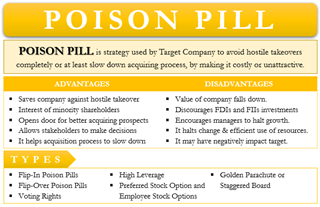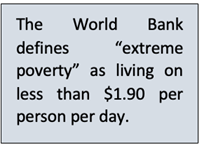Friday, 22nd April 2022
Procurement of wheat
In News
Wheat procurement is underway in various states of India.
About the News
- The Central government pays the minimum support price (MSP) announced beforehand for the crop.
- States do the procurement under two systems— the centralised one, also called non-decentralised procurement system (non-DCP) and the decentralised one, also called DCP.
- There are 15 states on the procurement list for the central pool, but the contributions from seven of the states are negligible.
- Among states, only Punjab, Haryana, Madhya Pradesh, Uttar Pradesh and Rajasthan are the main contributors to the central pool.
- Procurement agencies ensure that the stocks brought to mandis are purchased as per the specifications fixed by the government and farmers are not compelled to sell their crop below the MSP. But if a farmer gets a better price from private players, he/she can sell to them.
- The main purpose of procuring for the central pool is ensuring the MSP as well as the country’s food security by making food available to the weaker sections at affordable prices.
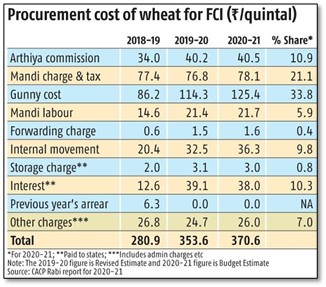
How does the government procure wheat?
- Procurement: Under the first system, the Food Corporation of India (FCI) directly or through state government agencies procure wheat from the purchase centres established across the states based on various parameters like moisture, lustre, broken/shrivelled etc.
- Arhatiyas: In Punjab and Haryana, farmers sell their crop to the central agency or state agencies through arhtiyas (commission agents).
- Support price: Minimum Support Price is announced by the government before the Rabi harvesting on the recommendations of the Commission for Agriculture Cost and Price and other factors.
- Reimbursement: Centre also reimburses the arhtiyas’ commission, administrative charges, mandi labour charges, transportation charges, custody and maintenance charges, interest charges, the gunny bag cost and statutory taxes.
- Excess stock: The cost of excess stocks handed over to the FCI is reimbursed to the state government or agencies as per the Centre’s policies.
- Storage: The wheat procured by the state agencies is handed over to the FCI for storage or for transportation to the consuming states.
- Logistic costs: The FCI, which is the central nodal agency for wheat procurement, pays the cost of procured wheat to the state agencies.
How much wheat is procured for the central pool by the FCI every year?
- Share: According to the records of the FCI, from 2011 to 2021, procurement for the central pool was between 25-40 per cent of the total wheat production.
- Growth: The procurement has doubled in the past one decade as 22.5 million tonnes of wheat was procured in 2011 and 43.3 million in 2021.
- Scale of procurement: In 2011 the total production of wheat was 88 million tonnes while it was around 109 million tonnes in 2021.
- Share: The government’s procurement was 26 per cent and around 40 per cent in 2011 and 2021
- Use of procurement: The procured grain is used for export purposes, the public distribution system and maintaining a particular stock for an emergency period.
- The remaining 60 per cent of the production goes to the bakery industry and other wheat-related businesses. Farmers also keep some of this wheat for their self-consumption.
- Share of wheat contribution of various states:
- Top state: Punjab has been the number one wheat contributor to the central pool with annual contribution of 22 lakh tonnes in 2021 alone.
- Other states: Madhya Pradesh’s contribution has jumped to the highest among all states at 129.42 lakh tonnes—in 2020.
Sources:
Missile Sarmat
In News
Russia has recently tested its new Inter Continental Ballistic Missile (ICBM)-Sarmat.
About the News
- The testing has come amidst stiff resistance from Ukraine in lieu of the ongoing war and harsh sanctions imposed by the West.
- The missile was launched from Plesetsk in North West Russia with the intended target in the Kamchatka peninsula almost 6,000 km away.
- The missile is believed to have at least five more launches in 2022 before being inducted into the Russian military.
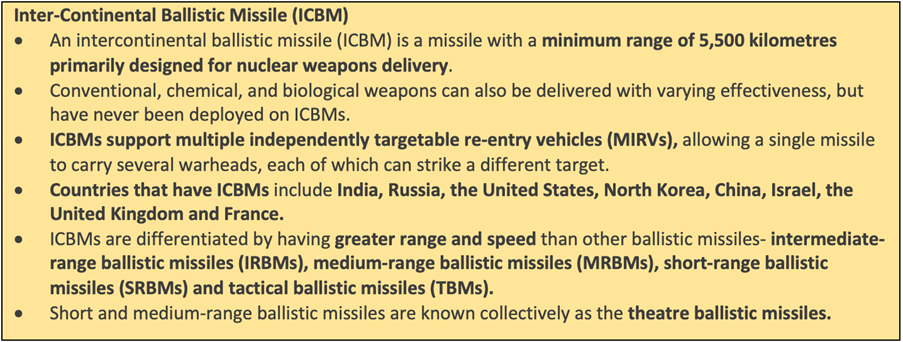
How is Sarmat more advanced than the other Russian ICBMs?
- The RS-28 Sarmat (NATO name Satan-II) is reported to be able to carry ten or more warheads and decoys and has the capability of firing over either of the earth’s poles with a range of 11,000 to 18,000 km.
- It is expected to pose a significant challenge to the ground-and-satellite-based radar tracking systems of the western powers, particularly the USA.
- The ten warheads are Multiple Independently Targetable Re-entry Vehicles and each has a blast yield of .75 MT.
- The Sarmat will also be the first Russian missile which can carry smaller hypersonic boost-glide vehicles. These are manoeuvrable and hard to intercept.
- The upgraded electronic counter measures, guidance systems and alternative warhead carrying capacity makes the RS-28 Sarmat ICBM more lethal than the R-36M Voyevoda ICBMs (NATO name Satan) currently in service in Russia.
- While the height and weight of Sarmat ICBM is the same as in the older one, it has more speed and high throw weight.
- However, the Sarmat is a liquid fuelled missile as compared to US ICBMs which have moved on to solid fuel systems.

Naming of the Missile
- Sarmat is named after nomadic tribes that roamed the steppes of present-day Southern Russia, Ukraine and Kazakhstan in the early medieval period.
- Sarmatians were highly developed in horsemanship and warfare and their administrative capabilities and political expertise contributed to their gaining widespread influence and by the 5th century BC they held control of the land between the Urals and the Don River.
- In the 4th century they crossed the Don and conquered the Scythians, replacing them as rulers of almost all of southern Russia by the 2nd century.
Source:
- Explained: What is Russia’s new nuclear missile Sarmat, capable of striking ‘anywhere in the world’?
- Russia successfully test-fires Sarmat intercontinental ballistic missile
- Putin rattles his 'Satan II' nuclear saber to hide Russian failures in Ukraine war: analysts
Image source:
Coal Shortage and the looming Power Crisis
In News
A combination of higher demand for power and shortages of coal, as coal stocks at more than 100 thermal power plants in India have fallen below 25% of the required stock, is threatening the economy with a potential power crisis.
Why does India face a coal shortage?
- Seventy per cent of India’s power demand is met by thermal power plants, which are mostly powered by coal.
- The biggest reason for coal shortage is the increasing power demand.
- In 2021, demand increased to 124.2 BU per month from 106.6 BU per month in 2019. In 2022, the demand has further increased to 132 BU.
- There was a 6% reduction in power generation from imported coal, which led to extra demand of 17.4 MT of domestic coal, depleting coal reserves.
- Moreover, there is a reduction in coal production as was stated by the Centre’s core management team (CMT) analysis on the 2021 coal shortage.
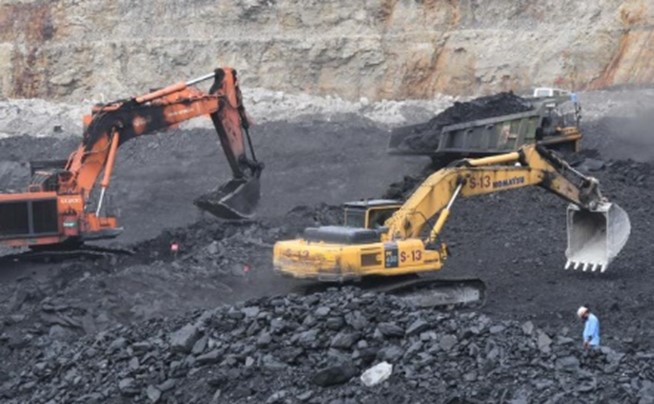
How will coal shortage affect power supply and cost?
- The daily electricity deficit in India has increased from 0.3% to 1% in April 2022.
- This has led to an 85% increase in the price of electricity traded on Indian exchanges from an average of Rs 3/kWh to Rs 8.23/kWh in March.
- To regulate prices, CEA has capped short-term power exchange rates to Rs 12/kWh.
- The peak in demand has been met with load shedding, planned outages by States like Andhra Pradesh, Gujarat, Maharashtra, Jharkhand, Bihar, Haryana and Uttarakhand.
The problem of Grid Collapse:
- The national grid operator Power System Operation Corp (Posoco), has warned several states against overdrawing power and risking a grid collapse.
- Maharashtra, Chhattisgarh, Gujarat and Dadra & Nagar Haveli are resorting to overdrawing, putting the national grid in trouble.
- Sources in the Union power ministry said the power crisis in western states is not due to coal shortage but on account of lack of foresight as arrangements were not made even as power demand soared and imported coal plants stopped operations amid high fuel cost.
- To avert the collapse of grid, states have now turned to idle thermal plants in search of additional electricity even at a higher price for power generated from costlier gas and coal.
Steps being taken by the Centre:
- The Centre has allowed States to use its captive coal reserves up to 25% to meet growing domestic demand.
- It has also allowed generating companies to blend imported coal up to 10% to ease the burden on CIL. While the Centre is mulling shoring up imported coal stock, higher coal costs make it difficult.
- In 2020, Centre had passed mining reforms to end CIL’s monopoly on India’s coal manufacturing.
- The law allowed commercial mining in coal sector with 50 blocks to be offered immediately.
- But the reforms have run into trouble as coal rich states like Bihar and Jharkhand opposed it citing that this will have an adverse impact on a large tribal population and forests.
- The case is pending in the Supreme Court.
Sources:
World Earth Day
Every year, people across the world celebrate Earth Day on April 22 to show their support for the protection of the earth and the environment. In 1969, peace activist John McConnell proposed a day to honour the planet at a UNESCO conference held in San Franciso. This was first observed on March 21, 1970. A month later, United States Senator Gaylord Nelson proposed the idea to hold a nationwide environmental teach-in on April 22, 1970. Along with activist Denis Hayes, Nelson renamed the event ‘Earth Day‘, going beyond the idea of a teach-in to include the United States. This year, the theme of the day is ‘Invest in Our Planet’ with an aim “to preserve and protect our health, our families, and our livelihoods”. It includes five primary programs – The Great Global Cleanup, Sustainable Fashion, Climate and Environmental Literacy, Canopy Project, Food and Environment, and the Global Earth Challenge.

What had we shared as ‘This day in History’ last year? To know, refer to:
Sources:
Rural Economy
In News
Prime Minister has recently urged lenders to finance rural businesses and projects aligned to national priorities like zero emission, health infrastructure, space, exports and start-ups.
About the News
- Areas in the rural economy that needed support from financial institutions includes natural and organic farming, bee keeping, warehousing, food processing and agriculture logistics.
- There is need to back these emerging areas including start-ups, exporters and sustainable infrastructure projects specially to get the covid-battered economy back on track and add much-needed jobs and livelihoods.
Rural economy in India
- Census 2011: India is predominantly a rural country with nearly 8 per cent of country’s population and 72.4 per cent of workforce residing in rural areas.
- Contribution in GDP: India’s rural ecosystem is large and growing steadily with rural economy contributing nearly half the nation’s overall GDP and employs nearly 350 million people or 68% of the total
- Growth: Over the last five years, the rural ecosystem has grown ~10% per annum (p.a.)—and still has strong headroom for growth.
- Sectoral contribution: Within the rural economy, agriculture holds the highest share of output (37%) while trade, hotels, transport, and communication are the next-highest contributors (16%), followed by manufacturing at 14%.
- Skewed distribution: Nearly 60% of rural population is concentrated in six states with Uttar Pradesh having the highest rural population (~18 crore), followed by Bihar (~11 crore).
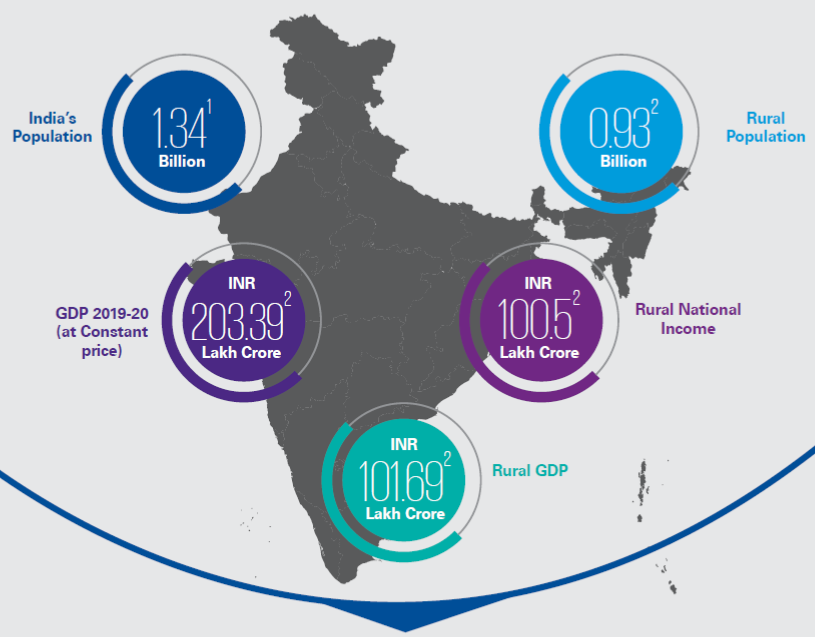
Why is rural economy important?
- Source of investment: Agriculture is the largest sub-sector in the rural economy, contributing approximately 37% of total rural GDP with agri-tech start-ups attracting ~INR 6.6K Cr in private equity investments.
- Enabler for future growth: With rural India becoming digitally savvy, with smartphone and internet usage increasing 30%+ CAGR in the last four to five years, which can act as a major catalyst for growth and development of economy.
- Harbinger of Financial inclusion: Integration of Aadhaar and Aadhaar-enabled banking and payments systems have propelled rural financial inclusion improving the digital payment and digital commerce solutions among common people.
- Locus of Community empowerment: FPOs and farmer producer companies (FPCs) helps in developing bargaining power and provide economies of scale in both public and private sectors.
- Emerging Platform for start-ups: Rural economy in recent years has created an ecosystem which has drawn multiple new players into the market to offer technology-based solutions like offtake marketplaces, storage and transportation services, and agronomy advisory services.
- New centre of finance: In FY20, the rural ecosystem accounted for ~43% of the total ~INR 130 lakh Cr expenditure. By volume, ~90% of rural payments to merchants were made in cash. As of March 2021, India’s gross loan portfolio was nearly INR 254K Cr, of which rural accounted for ~58%.
- Generator of credit culture: Rural economy has attracted agri-credit at ~10% CAGR in the last five years, reaching ~INR 14 lakh Cr in 2019–2020. About 35% of agri-credit business comes alone from three states: Tamil Nadu, Andhra Pradesh, and Uttar Pradesh.

What are the Challenges faced by the rural economy?
- Unemployment: It is one of the major challenges faced in India leading to not only migration but also feminization of poverty. As per ILO, about 400 million workers in the informal economy being at risk of falling deeper into poverty during the COVID-19 crisis.
- Agriculture related: The problems related to agriculture includes lack of expected awareness, knowledge, skill and attitude, poor marketing facility, small size of land holdings, primitive technology and low adoption of modern technologies besides reduced public investment and absence of role for farmers in fixing the prices for their own products.
- Economics problems: The economic problems related to rural areas are inability to adopt high-cost technology, high cost of inputs, under privileged rural industries, low income, indebtedness and existence of inequality in land holdings and assets.
- Infrastructural: Poor infrastructure facilities like water, electricity, transport, educational institutions, communication, health, employment, storage facility, banking and insurance.
- Administrative: The rural administrative problems consist of political interference, lack of motivation and interest, low wages in villages, improper utilization of budget, and absence of monitoring and implementation of rural development programme.
What more can be done?
- Expanding Farmers Producer Organisations (FPO): FPOs can act as a massive collective of distributed storage and primary processing (especially for high-value perishable goods). An integrated FPO effort will be quite instrumental in building the capacity of farmer groups especially the small farmers.
- Expanding post-harvest infrastructure: With post-harvest losses amounting to 20% to 40% depending on crop variety, there is a need for government and private players to increase their investments in post-harvest infrastructure like warehousing and primary processing centres.
- Improving access to robust data sources for real-time data and decision making: Access to reliable, real-time data for credit risk evaluation, weather forecasting, crop management, and enabling price transparency for the farmers.
- Building trust with farmers: Improving digital awareness in the rural ecosystem and adopt new practices at scale. Technology-enabled and personalised credit risk analysis to help improve the financial inclusion of millions of farmers who are still outside the organised financial ecosystem.

Conclusion:
India has seen a quantum jump in unplanned migrations from rural to urban areas and in order to improve socio economic conditions of vast majority of population in the country, there is a need to make rural economy stronger and create employment opportunities in rural economic activities. The improvement in economic conditions of rural households is also essential for reducing the disparity in per capita rural and urban income which has remained persistently high. This requires significantly higher growth in rural economy as compared to urban India.
Question: Rural Economy is the backbone of Indian economy. Analyze.
Source:
Guru Tegh Bahadur - Edukemy Current Affairs
This is image of A mid 17th century portrait of Guru Tegh Bahadur. To mark the 401st birth anniversary of Guru Tegh Bahadur, the ninth Sikh guru who stood up against forcible conversions by the Mughals, Prime Minister of India gave an address from the Red Fort on 21st April, 2022. Tegh Bahadur was born in Amritsar on April 21, 1621 to Mata Nanki and Guru Hargobind, the sixth Sikh guru, who raised an army against the Mughals and introduced the concept of warrior saints. As a boy, Tegh Bahadur was called Tyag Mal because of his ascetic nature. He spent his early childhood in Amritsar under the tutelage of Bhai Gurdas, who taught him Gurmukhi, Hindi, Sanskrit, and Indian religious philosophy, while Baba Budha trained him in swordsmanship, archery and horse-riding. He was only 13 when he distinguished himself in a battle against a Mughal chieftain. His bravery and swordsmanship in the battle earned him the name of Tegh Bahadur. He resisted the forced conversions of non-Muslims to Islam. Later, Guru Tegh Bahadur was executed by the orders of Aurangzeb in Delhi in 1675.
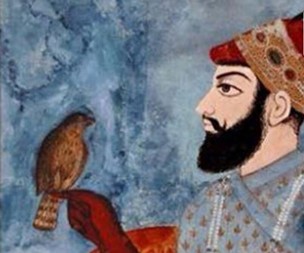
Source:
Warm Vaccines
- Context: A heat-stable Covid-19 vaccine is being developed by the Indian Institute of Science (IISc) in Bengaluru and biotech start-up company Mynvax.
- The vaccine needs no cold chain storage and has been observed to have generated strong antibody response against coronavirus variants, including Delta and Omicron, according to a study on mice.
- The vaccine uses a part of the viral spike protein called the receptor-binding domain (RBD), which allows the virus to connect with the host cell to infect it.
- While most vaccines require refrigeration to remain effective, the heat-tolerant Covid-19 vaccine can be stored at 37 degrees Celsius for four weeks and at 100 degrees Celsius for up to 90 minutes.
- The heat tolerance of the vaccine and its ability to withstand transient thermal shocks is particularly promising to address the vaccine inequity that affects most low- and lower-middle-income countries.

Source:
- India’s warm vaccine candidate effective against Delta, Omicron variants in mice: Study
- India's ‘warm’ vaccine candidate effective against Delta, Omicron variants in mice: Study
Image source:
Digital Banking Units (DBUs) - Edukemy Current Affairs
- Context: The Union Government has proposed to set up 75 Digital Banking Units (DBUs) in 75 districts across the country in 2022.
- A digital banking unit is a specialised fixed point business unit or hub housing certain minimum digital infrastructure for delivering digital banking products and services as well as servicing existing financial products and services digitally in self-service mode at any time.
- Commercial banks (other than regional rural banks, payment banks and local area banks) are allowed to open DBUs in tier 1 to tier 6 centers, unless otherwise specifically restricted, without having the need to take permission from the RBI in each case.
- As per the RBI, each DBU must offer certain minimum digital banking products and services.
- Such products should be on both liabilities and assets side of the balance sheet of the digital banking segment in which Digitally value-added services to conventional products also form a part.
- The services include:
- Savings bank accounts under various schemes
- Current accounts
- Fixed deposits and recurring deposit accounts
- Digital kit for customers
- Mobile and internet banking
- Debit and credit cards
- Mass transit system cards
- digital kit for merchants - UPI QR code, BHIM Aadhaar and point of sale (PoS).
- Other services include making applications for and onboarding of customers for identified retail, MSME or schematic loans, end-to-end digital processing of such loans etc.

Source:
- Explained: What are Digital Banking Units, and what services will they provide?
- Budget 2022: 75 digital banking units to be set up in 75 districts
Image source:
Dairy Complex-Gujarat
- Context: The Prime Minister has recently inaugurated a dairy complex at Banas Dairy Sankul in Gujarat’s Banaskantha.
- This initiative at Banas Dairy will empower farmers and boost the rural economy alongside strengthening Aatmanirbhar Bharat campaign through the cooperative movement.
- India is the largest milk producer.
- India is ranked 1st in milk production contributing 23% of global milk production.
- Milk production in the country has grown at a compound annual growth rate of about 2% to reach 209.96 mn tonnes in 2020-21 from 146.31 mn tonnes in 2014-15 .
- The Centre has been supplementing efforts of the State Governments to develop dairy infrastructure across the country by providing financial support through following Dairy Development Schemes to increase the income of farmers such as:
- National Programme for Dairy Development (NPDD)
- Dairy Entrepreneurship Development Scheme (DEDS)
- National Dairy Plan-I (NDP-I)
- Dairy Processing and Infrastructure Development Fund (DIDF)
- Supporting Dairy Cooperatives and Farmer Producer Organizations engaged in dairy activities (SDCFPO)

Source:
- PM Modi Launches Dairy Complex in Gujarat's Banaskantha, Says Projects Will Empower Farmers
- Gujarat: PM Modi lays foundation stone of multiple development projects at Banas Dairy Sankul at Diyodar
Image source:
Al-Aqsa Mosque
- Context: Tensions have recently flared at Jerusalem’s al-Aqsa Mosque compound leading to clashes that left few Palestinians wounded.
- This site has been recognised as World Heritage site by UNESCO.
- The site is holy for two of the three monotheistic world religions- Islam and Judaism.
- The Al-Aqsa Mosque compound, also referred to as Temple Mount by the Jews, according to them two biblical temples were originally situated there.
- It the third holiest location in the Islam after Mecca's Masjid-al-Haram and Medina's Masjid-a-Nabawi.
- According to Muslims, Rock out of which the Prophet rose to heaven, is housed within the structure. The Dome of the Rock protects the rock.
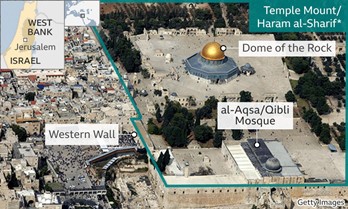
Source:
- Explained | Why is the Al-Aqsa Mosque Compound a flashpoint for the Israel-Palestine conflict?
- Explained: Why Jerusalem’s al-Aqsa Mosque has been a site of frequent clashes
Image source:
Skilling Efforts need to be scaled up: Hindu Business Line
Essence: Being one of the youngest nations in the world with an average age of 28 years, India has huge potential for economic growth if human capital development is prioritized. Declining labour force of the industrialized world presents India an opportunity of lifetime to become a supplier of talent and skills. However, the 2015 Report on National Policy on Skill Development and Entrepreneurship presented an alarming figure saying that less than 5 % of the total workforce in India has undergone formal skill training while it is over 95% in South Korea.
While success of government initiatives taken since like Pradhan Mantri Kaushal Vikas Yojana (PMKVY) and The SANKALP and STRIVE have improved the situation, upskilling and re-skilling needs of the Indian workforce remains unmet. Author concludes by saying that it is high time government and corporate entities collaborate on skill development and help India march ahead.
Why should you read this article?
- To understand opportunity India must emerge as a skill capital of the world and challenges it is facing.
- To note improvements made in the field of human capital development.
Source:
This is India’s moment of reckoning: The Hindu
Essence: The editorial talks about the impacts and consequences of reshaping and realignment of the world order impacted by Russia-Ukraine crisis. Globalization, which began with the fall of Berlin wall led to opening of trade barriers and free economic participation between countries. It placed trade percentage as an important part of the GDP of the nation. It helped in improving per capita GDP as well.
The integrated world assured that if supplies were linked, the constraints were also linked. But, today, the world is facing food crisis, fertilizer shortage, electronics shortage, which are side effects of the global village created out of integrated economies.
While India looks at bypassing the US sanctions on Russia and conducting trade in local currency, India’s geo-economic advantages must be weighed. India stands to gain more from the trade relations with western world than discounted trade with Russia-China. India holds the potential to drive the geo-economics of the future and could act as a fulcrum to future economic interactions.
Why should you read this article?
- To know the geo-economic impacts of bypassing US sanctions on Russia.
- To know the side-effects of formation of global village.
Source:
Everything about this refugee deterrent plan is flawed: The Hindu
Essence: The editorial talks about the many legal, moral and political challenges associated with rehabilitation of the illegal immigrants to UK with the help of Rwandan resettlement. For the non-criminal migrants accepted by Rwanda, U.K. will pay Rwanda £120 million per individual relocated to the country. Firstly, punishing those immigrants arriving through illegal routes is immoral. Next, Rwanda asylum plan is unclear of the rights of the resettled refugees. Moreover, the plan isn’t fool proof against incoming illegal immigration to UK. Such resettlements plan with Israel previously have failed to achieve the objective.
Why should you read this article?
- To know the issues with resettlement plan of illegal refugees arriving at UK.
Source:
Jungle Ki Sherni
Background
Kandoni Soren of Jharkhand organised 40 women from her tribe to safeguard their forest and natural resources from illegal tree cutters.
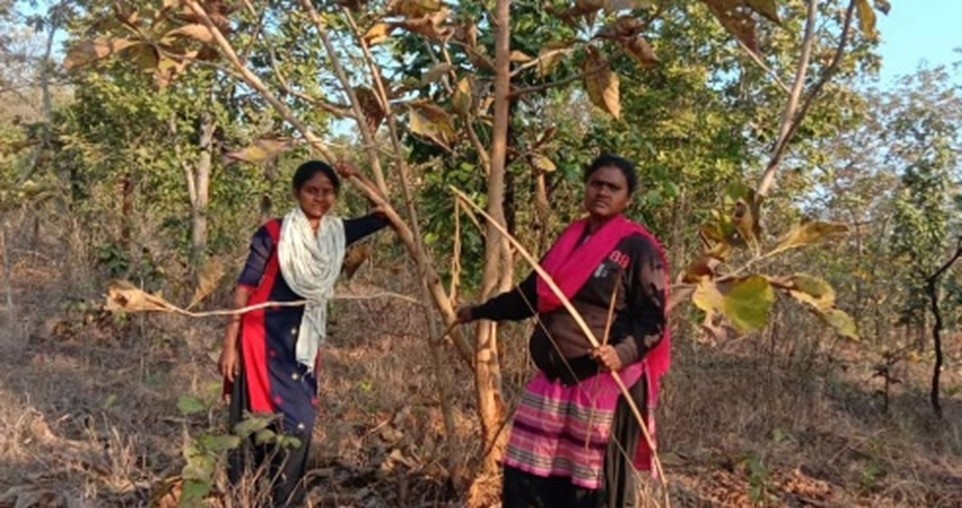
About Jungle Ki Sherni’ & Her Team
- Every morning, armed with sticks and bow arrows, a group of indigenous women from Sarkaghat leave their homes. They march together to the Jharkhand forest that borders their village, then disperse into the deeper areas.
- They keep an eye out for persons who enter the forest for the purpose of unlawful tree felling and prevent them from stealing their valuable resources.
- Kandoni, a Jamshedpur Police house guard, is the driving force behind this programme, which she started in 2011.
- Many outsiders enter the forest to make use of its resources. However, they frequently go too far and exploit the land. They are gangs and mafias with a long history of criminal activity.
- According to Kandoni, many rural people had already begun to experience the effects of environmental degradation and had begun migrating to other cities in search of alternative means of income.
- The organisation has grown to 40 members throughout the years. They patrol the forest 24 hours a day and defend their natural resources.
- They planned shifts and marked out the forest's boundaries. Some high-risk zones or isolated places require extra care, thus they are divided into four teams and shifts are scheduled accordingly.
- This initiative has resulted in an 80-90 percent reduction in unlawful tree felling.
Quote: “Conservation is a positive exercise of skill and insight, not merely a negative exercise of abstinence and caution.”- Aldo Leopold
Source:
Share the article
Get Latest Updates on Offers, Event dates, and free Mentorship sessions.

Get in touch with our Expert Academic Counsellors 👋
FAQs
UPSC Daily Current Affairs focuses on learning current events on a daily basis. An aspirant needs to study regular and updated information about current events, news, and relevant topics that are important for UPSC aspirants. It covers national and international affairs, government policies, socio-economic issues, science and technology advancements, and more.
UPSC Daily Current Affairs provides aspirants with a concise and comprehensive overview of the latest happenings and developments across various fields. It helps aspirants stay updated with current affairs and provides them with valuable insights and analysis, which are essential for answering questions in the UPSC examinations. It enhances their knowledge, analytical skills, and ability to connect current affairs with the UPSC syllabus.
UPSC Daily Current Affairs covers a wide range of topics, including politics, economics, science and technology, environment, social issues, governance, international relations, and more. It offers news summaries, in-depth analyses, editorials, opinion pieces, and relevant study materials. It also provides practice questions and quizzes to help aspirants test their understanding of current affairs.
Edukemy's UPSC Daily Current Affairs can be accessed through:
- UPSC Daily Current Affairs can be accessed through Current Affairs tab at the top of the Main Page of Edukemy.
- Edukemy Mobile app: The Daily Current Affairs can also be access through Edukemy Mobile App.
- Social media: Follow Edukemy’s official social media accounts or pages that provide UPSC Daily Current Affairs updates, including Facebook, Twitter, or Telegram channels.


